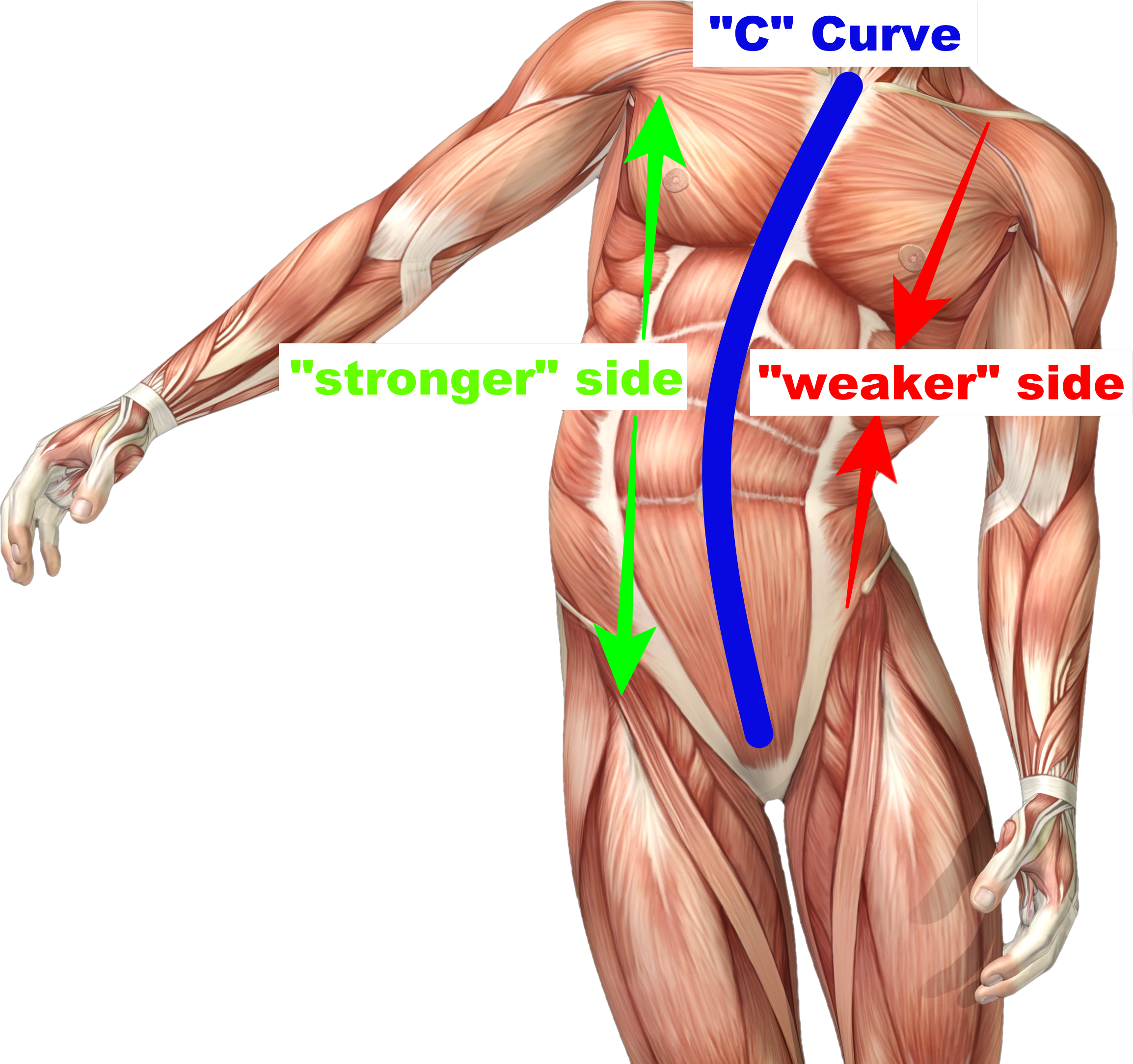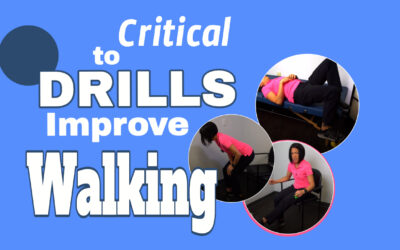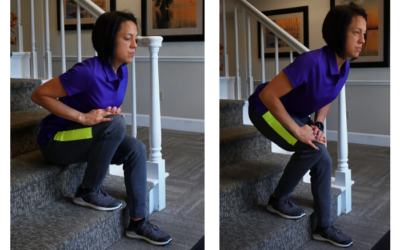Hemiplegia (weakness on one side of the body) can cause an unnatural “side bent” posture. This is sometimes also referred to as lateral trunk flexion.
What is a “side bent” posture (lateral trunk flexion) with hemiplegia?
A side bent posture is a “structural problem” where the trunk curves (like a “C” shape).

The convex side of the “C” is typically on the strong side and the concave side is on the “weaker” side. When looking at someone from the front, the shoulder and the hip will appear closer together (on the weaker side) when compare to the distance between the shoulder and the hip on the stronger side of the body. This type of improper body alignment can make movement retraining and gait training difficult.
How does hemiplegia cause a “side bent” posture (lateral trunk flexion)?
This type of mal-alignment of the trunk can be caused by a variety of factors. In most cases it is the combination of several factors.
- Shoulder subluxation
- Spasticity
- Neglect
- Learned non-use
What are the best exercises to “re-align” the trunk?
The goal in neuro rehab is always to start with a stable, properly aligned trunk. Proper trunk alignment is critical when relearning efficient arm and leg movement. In the case of lateral trunk flexion, the strategy (to remove the “C” curve) is two-fold. First, it is important to lengthen the muscles on the “concave” side of the trunk. Second, retrain the body to position and maintain the trunk in a straighter, more vertical position.
In this video, I cover this topic in greater depth as well as provide exercises to relearn proper body alignment.
More articles you may be interested in:
How to Fix Knee Buckling Post Stroke
Why Your Knee Buckles—and How to Regain Control Say Goodbye to Knee Giving Way and Hello to Confident Walking https://youtu.be/wNZxiTXTz7QWhat Is Knee Buckling? Knee buckling refers to a sudden, unexpected loss of stability in the knee joint, often described as the...
Understanding and Fixing Leg Cramps Post Stroke
Clonus Explained: What It Is, Why It Happens, and What You Can Do About It Stop Letting Leg Cramps Slow Your Recovery https://youtu.be/fGNGXoMSvT4 Can Clonus Affect the Way You Walk? Absolutely—Here’s What You Need to Know Have you ever felt your foot suddenly...
Why Your Hand Still Won’t Open After Stroke | 3 Mistakes to Fix
Why Forcing It Doesn't Work How to Stop Reinforcing the Wrong Patterns and Start Rewiring Your Brain for Real Recovery https://youtu.be/fDIgGLM8Kj0If you’ve had a stroke (or other neurologic injury), and your hand feels like it’s stuck in a fist or your arm just hangs...
Understanding Abnormal Synergy Patterns After Stroke: The Missing Puzzle Piece in Recovery
Understanding Abnormal Synergy Patterns After Stroke: The Missing Puzzle Piece in Recovery Stroke recovery is rarely straightforward.You might work on strength, balance, and mobility—yet your movements still feel awkward, stiff, or “robotic.” Why?One of the most...
Post-Stroke Shoulder Pain: Why It Happens and What You Can Do About It
Post-Stroke Shoulder Pain: Why It Happens and What You Can Do About It If you’ve had a stroke, chances are your shoulder has tried to steal the spotlight at some point. Not in a good way. Post-stroke shoulder pain is one of the most common (and most frustrating)...
How to Fix An Abducted Gait
Reclaim Your Stride: Fixing Abducted Gait After Stroke https://youtu.be/VGvg5qeLmy0 Recovering from a neurological injury can affect your walking pattern, one of which is the "abducted leg walking pattern." In this post, we'll cover what it is, its causes, and how to...
How to Fix a Trendelenburg Gait
Why Your Hip Drops When You Walk : How to Regain Stability https://youtu.be/37akItHE9mcHave you ever noticed that one side of your hip drops lower when you walk? Maybe someone pointed it out, or you feel off-balance or unsteady when taking steps. This could be a sign...
Correct Knee Hyperextension after a Neurologic Injury
Struggling with Knee Hyperextension? Here's How to Fix It! Does your knee snap backward when you walk? Do your steps feel jerky, unsteady, or inefficient? If so, you might be dealing with knee hyperextension, a common issue after a stroke, brain injury, or...
Walking Exercises for Stroke Patients
Many people inquire about the "best exercises" for stroke patients to improve walking. I like to use the term "Drills" when referring to "stroke exercises". Why? Because "Drills" are what I think of when I think of repetitive movement. Case and point, drills are...
Regain Normal Walking After a Stroke: Advanced
A common goal after a stroke or a brain injury is to regain "normal walking". However, this goal is not limited to just those who have suffered a stroke. I dare say it is the number one goal of almost everyone who has suffered an injury to their neurologic system. ...












